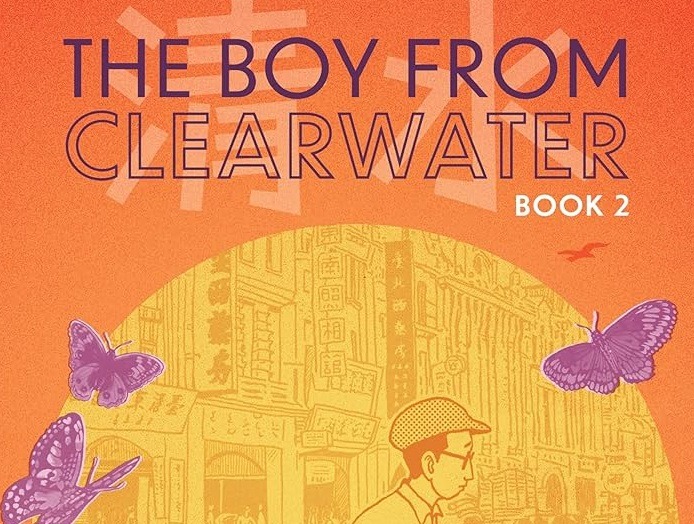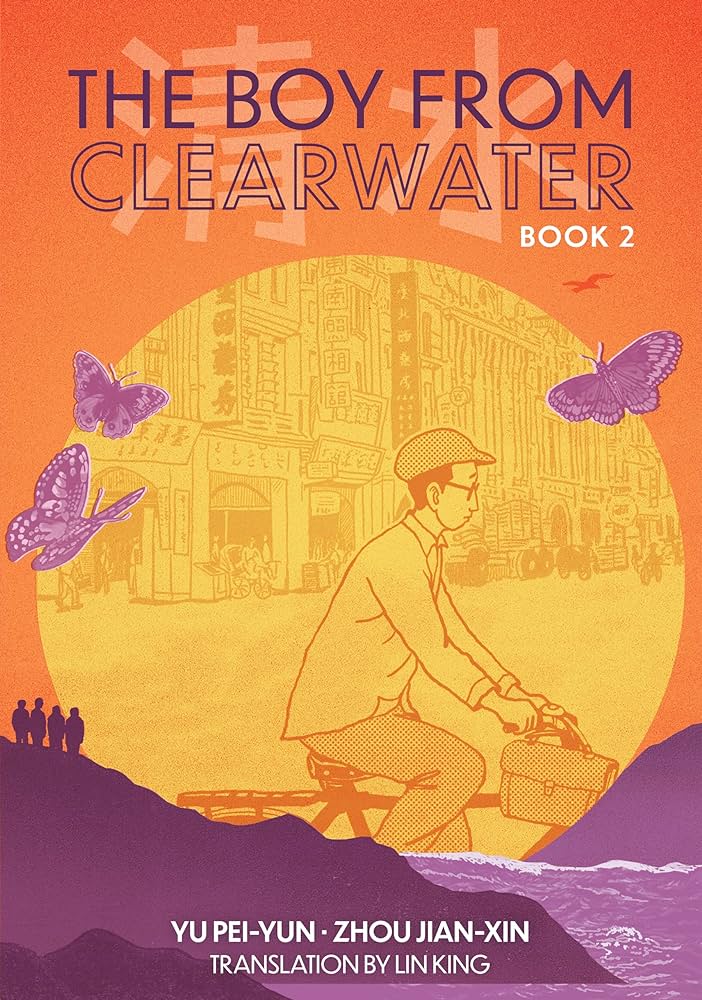
Tsai Kun-lin, a Taiwanese manga publisher, helped bring about the country’s manga explosion in the 1960s. Now The Boy from Clearwater, a new graphic novel series from author Yu Pei-yun and illustrator Zhou Jian-xin, shares his incredible true story.
Volume two drops on May 7 from publisher Levine Querido, and it traces Tsai’s life following his 10-year imprisonment. His crime was being part of his high school book club, because the Chinese Nationalist Party, which was in charge then, thought the book club had politics contrary to its own. Tsai just loved to read. After his imprisonment Tsai went into publishing work and helped change the international manga landscape. Otaku USA spoke with Yu Pei-yun, Zhou Jian-xin, and translator Lin King about how Tsai was involved with this project, how he helped bring in Taiwan’s manga boom, and the task of translating this book into English.
What can you tell us about Tsai Kun-lin, and how was he involved with this project through his interviews?

YU PEI-YUN: Tsai Kun-lin was a kindly and gentle man who befriended many young people through his work as a human rights educator and activist. When he passed away in September 2023, his service was filled with young people who quietly lined up to bid him farewell. That scene alone showed the extent of Mr. Tsai’s devotion to his human rights volunteer work, which he persisted in for twenty years after his retirement. It was his hope that Taiwan’s hard-won democracy would continue to thrive, and that the political persecution that he and his generation experienced will never take place again.
He wasn’t looking to become the main character of a graphic novel, but I convinced him that I didn’t just want to portray him as a “hero”—I wanted to capture the different eras he’d lived through, and to include his loved ones and cherished work in my portrayal. He gave me about a dozen in-person interviews, followed by about a dozen more online interviews when the pandemic broke out. He also proactively provided me with photographs that were important to his life (family portraits, etc.), as well as letters from his time on Green Island. He tried his best to recollect the details of his past to answer my many questions.
How did Tsai Kun-lin help bring about Taiwan’s manga boom?
YU: After returning from Green Island in the 1960s, Mr. Tsai worked at the comics publisher Wenchang Press, which nurtured a whole cohort of young artists. Mr. Tsai used his one-of-a-kind and innovative editorial and publishing approaches to bring unprecedented success to the serialization and sales of comics in Taiwan. He also contributed ideas about new themes and subject matter to address through comics. In 1966, the Taiwanese government imposed a comics censorship review system, causing many artists to lose their jobs. To address this, Mr. Tsai was encouraged by his comic artist friends to establish the semi-monthly children’s magazine Prince, reserving 20% of each issue for comics (publications with 20% or below didn’t require censorship review). He also employed comic artists as illustrators for the magazine, giving them a way to survive the politically restrictive era.
How has manga been influential in Taiwan?
ZHOU JIAN-XIN: Due to Taiwan and Japan’s geographical proximity, and due to historical factors like Japan colonizing Taiwan for fifty years and importing large quantities of Japanese publications, Japanese manga is very popular among and familiar to Taiwanese readers. As a result, many Taiwanese artists adopt Japanese styles when creating their own work. The Taiwanese graphic novel market is still dominated by manga, but in the past decade or so, thanks to the internet and the Taiwanese government’s increasing support of the industry (as exemplified by the Ministry of Culture’s establishment of the Golden Comic Awards), Taiwanese artists have begun participating in more international conventions and festivals and publishers have started importing more European BDs and American comics. Exposure to these different styles of expression has influenced newer Taiwanese artists and inspired them to create in more diverse ways.
Has manga been influential in your life? Do you have any favorites?
LIN KING: The first books I learned to read were comic adaptations of the Chinese classics Journey to the West, Water Margin, and Three Kingdoms, created by a Taiwanese publisher called Newton. The rest of my childhood can be summed up by—in chronological order—Doraemon, Cardcaptor Sakura, Shaman King, and Fullmetal Alchemist. Current favorite manga artists are Gao Yan, a young Taiwanese talent who’s active in both Taiwan and Japan, and Tsutsuyi Tatsuya, who creates visually stunning psychological mysteries. I also love a good comedy: Gintama, The Disastrous Life of Saiki K, SPY x FAMILY. I read Barefoot Gen by Keiji Nakazawa in college and thought about it a lot while translating The Boy from Clearwater.

How do you approach translating a graphic novel as opposed to a prose book?
KING: This sounds really rudimentary, but a big concern was just fitting the words into the bubbles. Since Mandarin, Taiwanese, and Japanese all use logographic Chinese characters, they generally take up a lot less space than English. I had to prioritize being concise, which isn’t generally a top concern when translating prose. Also, in translation there’s a technique called “stealth glossing,” which means weaving the explanation for something into the text itself instead of adding footnotes. This was often impossible to do in the graphic novel form because it adds to the length, but the historical nature of this story meant a lot of exposition was needed. So the Levine Querido team and I had to think hard about how to create a reading experience that isn’t overly disruptive but still informative and comprehensive.
____
Danica Davidson is the author of the bestselling Manga Art for Beginners with artist Melanie Westin, plus its sequel, Manga Art for Everyone, and the first-of-its-kind manga chalk book Chalk Art Manga, both illustrated by professional Japanese mangaka Rena Saiya. Check out her other comics and books at www.danicadavidson.com.

